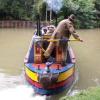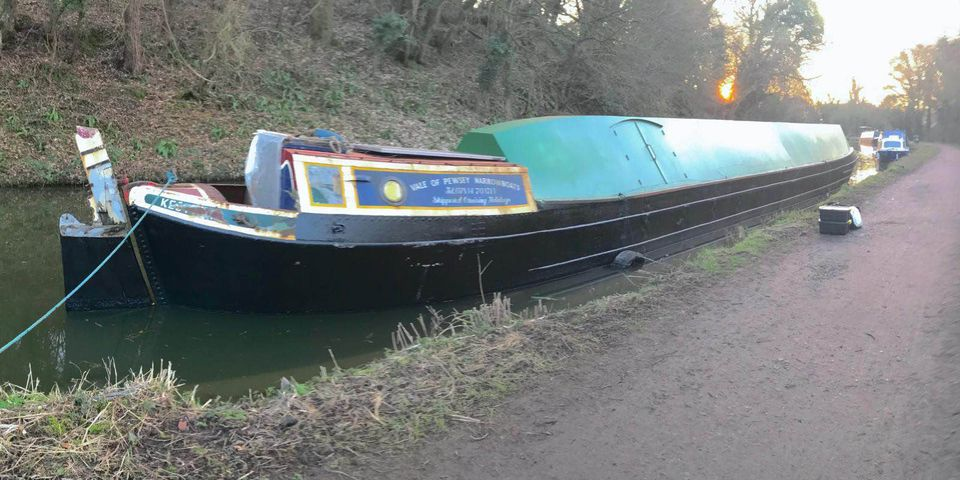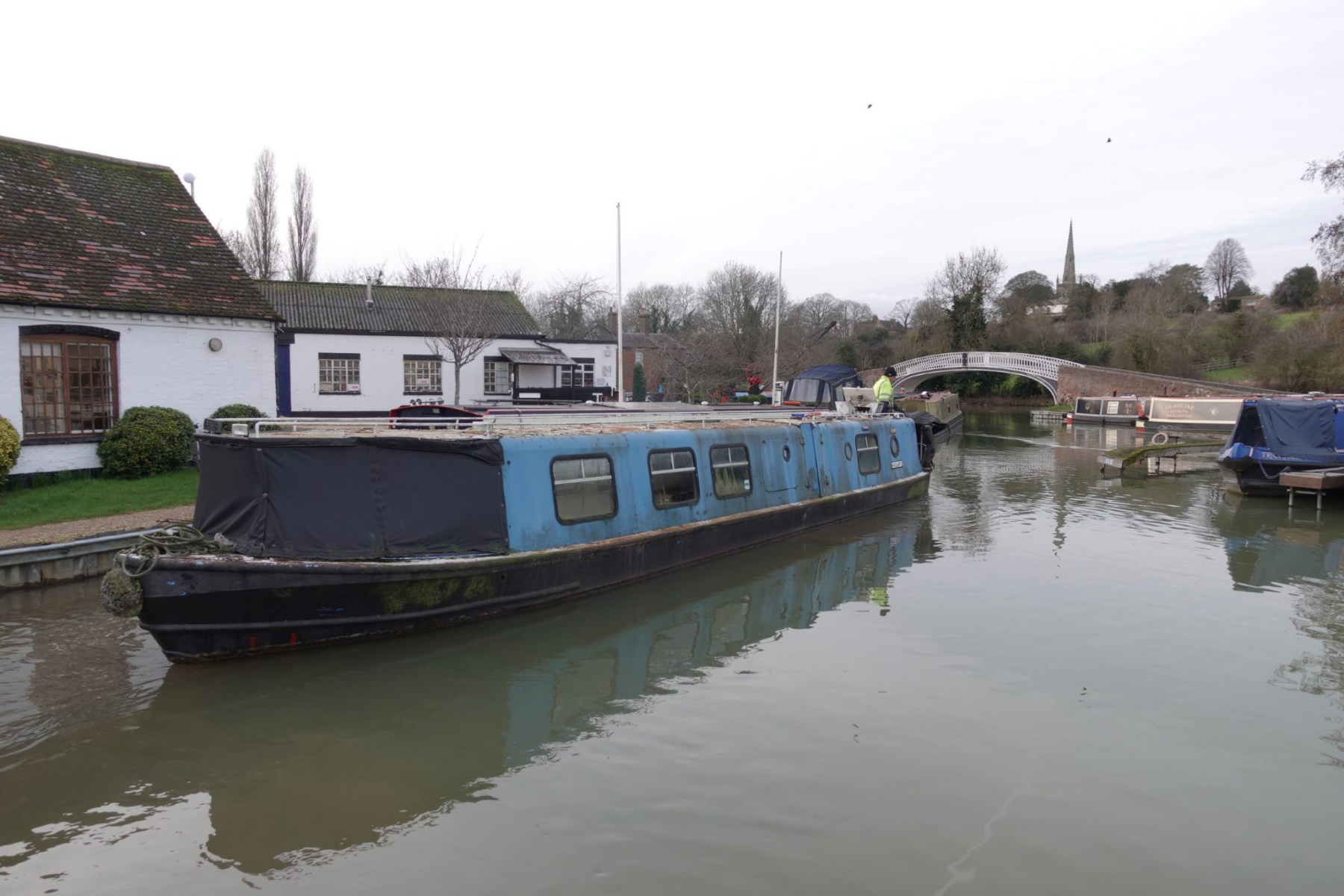-
Posts
37,864 -
Joined
-
Last visited
-
Days Won
81
Content Type
Profiles
Forums
Events
Gallery
Blogs
Store
Posts posted by alan_fincher
-
-
14 hours ago, uncle nick said:
However, from asking on here for help identifying the age or builder, it was suggested the CaRT number (519542) could be 1992.
4 hours ago, Tony Brooks said:The CaRT number is not a very reliable proof of age, only the time the boat was registered with BW/CaRT. It might have come from a non-CaRT waterway at some time.
CRT registration no 519542 is certainly not from 1992. I don't have access to the data at the moment, but is well post 2000.
As Tony suggests though a modern CRT number is not a meaningful way of determining boat age -one of my boats has a 6 digit 501vxxx number, but was built in 1936. -
-
59 minutes ago, Rufford said:
Triagulum is for sale on Facebook marketplace. Now with steel top and spray foamed and lined out.
Bargain at 53k... 🤣
I'm looking for a converted butty but not prepared to pay a premium for the inconvenience of no engine when I could buy a motor for the same money!
https://www.facebook.com/commerce/listing/1387222361915474?media_id=0&ref=share_attachment
-
I think I would be wanting to sort out/replace all the cables before assuming the fault is definitely with the alternator. The state of things where terminations are crimped to iffy looking conductors wouldn't give me any confidence at all.
-
2 hours ago, zenataomm said:
Also the advert brags an HR2 dating from the 50s, which is no mean achievement when you consider that Lister model wasn't introduced until 1969!?A very early prototype!
-
This one keeps coming around.
https://www.apolloduck.co.uk/boat/narrow-boats-traditional-for-sale/655585
£94,995 seems a bit much if it is quoted as over-plated.
It claims original hull sides were iron rather than steel. I can't recall if that is correct or not, but must admit I always thing the construction of these boats was welded steel.Perhaps I'm wrong?EDIT: It seems I was wrong! On checking I now believe the actual construction was welded wrought iron, (other than the bottoms which were wood, as the boats were of composite construction.
-
-
On 04/03/2024 at 09:30, jonesthenuke said:
Just a thought, but are there any derelict locks that would give an idea of construction and design? I am thinking of the scenario where part of the walls have collapsed, thus allowing an insight into brickwork thickness etc.
I recall that when there was a massive failure of one of the sidewalls on a lock towards the end of the Aylesbury arm that CRT had access to plans that they assumed would show how it was built.
I may have this slightly wrong, but my memory is that they actually found that the brickwork was about double the thickness of what the plans actually showed.
-
My first reaction is that if you want to drill through the base-plate at various positions then the boat will need to be raised from the ground by more than the length of a suitable drill armed with a suitable drill bit.
Many narrow boat docking arrangements would not raise the boat up sufficiently.
Once you have the holes how would you propose to measure how much solid steel you have before it changes to scale or rust?
You have really got to trust whoever is welding up those holes, and hope they don't get t sightly wrong at any point!
-
A British Waterways Maximum Craft Dimensions document that I have a filed copy of lists the following maxima for the GU.
Brentford to Braunston 76 feet
Braunston to Camp Hill 78 feet
The fact that Progress has been able to make it to the outskirts of Birmingham certainly proves that an oft quoted maximum length of 72 feet for the GU is decidedly pessimistic
-
 1
1
-
-
15 minutes ago, BEngo said:
Network rail, or Railtrack before them, had already demonstrated that they could not upgrade the west coast main line without causing so much disruption that you might as well close it and do the work. There were also soaring costs, well beyond inflation so the project was abandoned part completed. Virgin had to be paid a lot of money because they had invested based on a performance promise which could no longer be met.
HS2 is supposed to be an answer to this, but merely demonstrates that the DfT civil service knows stuff all about running a railway and ministers are readily seduced by a big shiny project. The original business case for HS2 included aTreasury subsidy of about £1billion a year, in then money. It assumed that people would travel to Euston from places like Gerrards Cross, Beaconsfield, High Wycombe and others to get a train to Brum, instead of getting on a Chiltern train or the M40. Even with such wildy optimistic assumptions and others of similar ilk, it did not stand up but no one had the brains, or balls, to kill it off.
The original Great Central London Extension was a victim of similar issues. Once Watkin and the the Channel link had gone there were no profitable intermediate stations and trains to Manchester and Sheffield simply did not have the loadings to pay their way.
A new modern but not High Speed railway to Brum might make sense, because it could have stations on the way so that it is quicker and easier to go from a West London or leafy Bucks home to Brum, but it is too late now.
N
A good analysis of the situation, I think.
-
 2
2
-
-
Assuming the damaged door, (is there only one?), will lift off the hinges, it might be worth asking Martin Kedian, who posts on here from time to time, if he could fabricate a replacement. Martin is the expert of all things hatch related, and I'm sure would give an honest answer.
Alternatively if might even be possible to straighten what you have.
-
By any measure almost 14 years is a long while to leave a dormant thread before trying to bring it back to life!
I hoped for a moment that the much missed Bones might have started posting again, but sadly no!
-
4 hours ago, Derek R. said:
Certainly an acquired taste in fore ends.
..... and in rear ends!
The whole thing was frankly a Marmite boat.
I wonder where it has ended up. -
15 minutes ago, Tim Lewis said:
Some interesting old film of Severners from 6.30 minutes into this film:
Interesting footage.
However without squinting too hard and for too long, it looks to me that most of the SandCC motor boats pictured are not the Charles Hill welded boats, and are instead the wooden types identified by a number, rather than a name.
The most obvious identification in distant shots is that the wooden boats had their motor in a conventional engine hole ahead of the living accommodation to the rear of it - so the exhaust comes from where most of us are used to.
The Charles Hill boats had the engine room to the rear, with the living accommodation ahead of it. That makes the engine exhaust at the back (nice for the steerer!) There may have been some examples of this in the film, but if I I didn't see it on a quick run through. -
-
3 hours ago, John Brightley said:
As far as I can remember, Speedwell is still basically the same as it was when it was a hire boat - it was a bit unusual in the 1980's !
Just 35 feet of boat but wit a Lister HB2 in it - a strong potential for waves breaking over the towpath!
-
1 hour ago, magnetman said:
I seem to recall there are the remains of a miniature railway there for the gasworks.
A narrow gauge railway, always horse worked, certainly. I would tend to only use "miniature" for those lines operating stock that looks like a miniature of that on a full sized railway.
Much of it is still there, or at least the run between the bridge under the West Coast main line, and the boundaries of the former gas works. I am not sure how much exists on the other side of the West Coast mainline, where the standard gauge coal wagons were discharged down chutes into the narrow gauge ones. There is a heavy locked fence that stops you getting through from the canal side, (and ultimately into people's back gardens!)
1 hour ago, Derek R. said:East's was just off Stag Lane, still operating in the seventies when I was on the buses. It's entrance was between Stag Lane and Billet Lane. Stag Lane led up to one of the 'Gas Two' locks. All built over with housing now.
The Gasometer location can best be located on SO 1:25,000 1937 - 1961 edition.
Yes - I assume where that map shows "Mill" it is referring to East's saw mill.
-
9 hours ago, mark99 said:
That picture was taken slightly north of the bridge that carries Billet Lane over the canal - that's it in the background.
As far as I know East and Son's premises were alongside the same pound, but further to the South - opposite part of the gas works, I believe, although I can't remember the exact location without looking at some historic maps So it is a bit of a mystery why this pair has tied up onle a couple of hundred yards from East;s yard.
I must admit I didn't know this private yard was into wholesale production of lock gates. Only a few miles North of this picture is Bulbourne Works, where company produced lock gates were manufactured.
(Someone will now tell me that East's had multiple canalside yards in Berkhamsted!) -
I agree with the suggestion that the cabin was probably clad in "Masonite" - it is highly unlikely to actually have been MDF
In my experience it was quite normal to have a layer of heavy duty roofing felt between the Masonite outer and the tongue and grooved inner, usually with a bituminous product applied to all surfaces in the "sandwich". I have certainly constructed a cabin that way.
It was not unusual to have no additional insulation
-
1 hour ago, MtB said:
They are not handsome boats in my opinion, but beauty is in the eye, and all that...
They are ordering a wide beam boat - it will not be handsome whoever builds it!
-
 2
2
-
 2
2
-
-
2 hours ago, alan_fincher said:
I think DABCHICK might have been the only LMS station boat to end up in the Willow Wren fleet - though I could be wrong.
44 minutes ago, spud said:heron
Ah! - I did say I could be wrong! 😁
-
The butty DABCHICK pictured was part of a pair operated by the Willow Wren carrying company. It was originally an LMS "station" boat - a horse drawn boat - and would have been used for short haul interchange traffic on the BCN.
They were elegant boats, but with lower hull sides than on many purpose built motors and butties, which limited their carrying capacity, particularly on cargoes that were bulky rather than dense. The boatmen tended to favour boats they could put bigger loads on, as they were paid by weight carried.
I think DABCHICK might have been the only LMS station boat to end up in the Willow Wren fleet - though I could be wrong.
-
On 24/01/2024 at 17:47, IanM said:
There seems to be a distinct lack of tow rope.
My thoughts exactly...
Perhaps it has a hydraulic motor in the rudder...






Cash for used Leisure Batteries?
in Boat Building & Maintenance
Posted
Last time I inquired of a merchant local to my home, (North West Herts), the rate I was quoted was very much less than any quoted above, and from memory would only have yielded around £6 per 110 Ah battery. So I didn't bother at the time. This means I now have about half a dozen 110 Ah batteries stacked outside, as well as a couple of much smaller car batteries.
Perhaps I should try again? Although our boats are berthed in the Weedon area, I really don't fancy carting all these batteries up there, as we usually travel with 2 large dogs in the boot, and I don't fancy staking batteries on the rear seat..